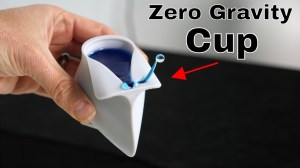The Advanced Supercomputing Division of NASA’s Ames Research Center simulated the aerodynamics of a quadcopter drone using lines and color to visualize the movement of air around the rotors and body of a DJI Phantom 3 drone.
For decades, NASA has used computer models to simulate the flow of air around aircraft in order to test designs and improve the performance of next-generation vehicles.
At NASA’s Ames Research Center in California’s Silicon Valley, researchers recently used this technique to explore the aerodynamics of a popular example of a small, battery-powered drone, a modified DJI Phantom 3 quadcopter.
This simulation reveals the complex motions of air due to interactions between the vehicle’s rotors and X-shaped frame during flight. In the video, airflow interactions are shown as undulating lines. Pressure changes are shown using color. Areas of high pressure are red; low are blue.






